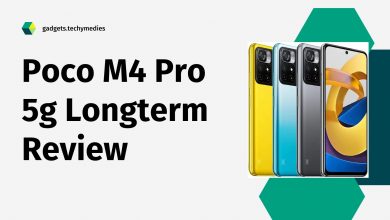Third-party Android Launchers: Are they Safe to Use?

Customizing your Android phones are easy as compared to the iPhone. Here we can get the number of third-party apps that lets you give a decent feel and user experience the users like you. Even these days most Android comes with the custom UI-based ROM we may still need more customization and different looks. If you are the one who loves to customize the Android either by changing the themes or launcher then you must need to be clear about whether these apps are safe to use or not.
Installing the launcher is one of the easiest to get the feeling like the particular Phone. A few years back most users used to prefer to download the iPhone launcher on their Android phones. Somehow it gives the looks like an iPhone on your phone but it has a lot of negative effects too.
Yes, we can find the number of demerits for using such launchers. Okay, leave it. Coming to Android then some users love to watch or explore their android with the unique style of the launcher. Because of this people are in search of the best, new and particular features-based launcher in the Play Store.
Why Android Launchers?
Android Launchers are the easiest method to give the new look to any Android phone. Here you need to install the particular Android launcher on your phone like the other apps. Allowing the permission and customizing is based on your hands.
These launchers provide the colourful, new, and best designs on their UI, colour, App icons, widgets, exploration, and others in the front. The launcher only changes the launching experience of your Android phone, not more than it.
Customization
The primary reason to install the Android launchers is just to customize the outer behaviour of your Android phones. It only helps to perform outer home customization. Customizing the home screen and app behaviour is easy, and fast with the Android launchers.
As compared to rooting and installing the custom ROM it’s a far better, safe, risk-free and time-saving process to give live customization to your Android phones.
Better User Experience
The user experience will also be different after installing the launchers on your phone. Here you can get somehow better or some percentage of real experience while using the particular phone’s UI.
Installing the launchers like Poco Launcher or Pixel gives the feel of pure or stock Android on your phone. Yes, as per your need you can get a better user experience by installing the launchers.
Besides, there are several iPhone launchers prepared for Android users by third-party users, that’s also the best option to get the poor experience of iPhone on Android phones.
Why Android Launchers are not Safe to Use?
Nowadays, the launcher used is smarter and asks you to allow different permission before using it, that’s the biggest risk that you are facing. Yes, for making the navigation much easier or to get better data to feed for customizing the Launchers may ask you the different permission to allow.
Because of this reason, the big question mark rise on all of the users like you and me. If this is the case then we have different points to take care of before using such launchers. Although the launchers help to customize and give a decent outlook to your home, and app icon, it’s launching behaviour you must need to be secure from this trap.
Security and Privacy
Security and Privacy are the foremost for all of us. As we mentioned, almost all the apps required different permission to run. Here too, the launchers may ask you the different permission. Allowing the permission means you allow that particular app to read, and take control over that particular data.
For example, if you allow the Contacts and Dialer permission to the launcher app then that app holds the right to read, and control all contacts, phone calls, etc. That’s why before allowing the permission you must need to rethink twice.
Down Performance
It may be bitter to hear but it’s fact. Due to some reasons installing the third-party launcher slows down your phone’s real-time performance. Primarily, installing the launcher is heavy in size and consumes enough per cent of your phone’s RAM.
Besides, we can’t trust third-party apps blindly. These apps are developed by different developers. So, the chances are, malware and other data transferring viruses on it.
After allowing the app permission the app holds the right to take control of the phone’s data. So, here you need to stop using the third-party launcher.
Even the Themes available in the Themes stores of Xiaomi lack when used in real-time than other why not. In comparison, Themes are lighter than the Launchers.
Choosing the Best and Secure Launcher
There are limited options for choosing the best, lightweight and secure Android launchers for you. If you love to get the Stock Android to feel in your Android then you can go for the trusted Poco Launcher Developed by Xiaomi. Besides, for the Windows and Widgets with attractive Smart Bar you can for the Microsoft Launcher by Microsoft Team. Although using the third-party launcher is not the best in terms of the health of your phone you can go for some trusted, and safe Android Launchers like Poco Launcher, Microsoft Launcher, Nova Launcher, Smart Launcher, Apex Launcher, etc.






Super
Nice
Hlo
I want to see it
Odisha,khordha